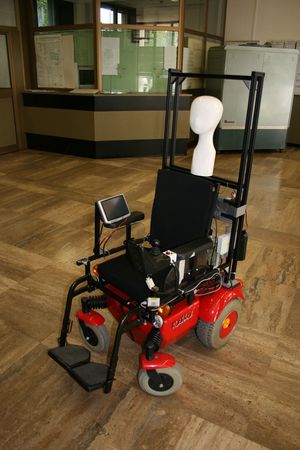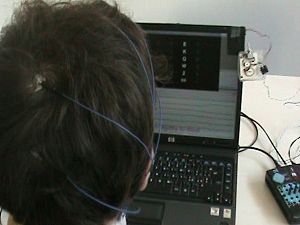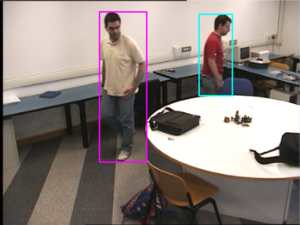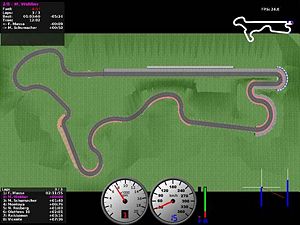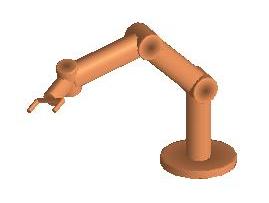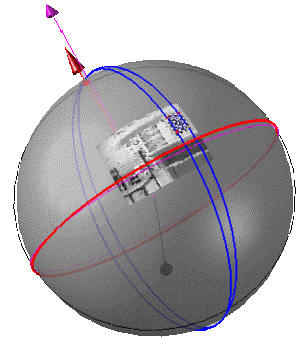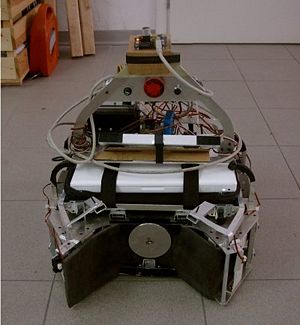Difference between revisions of "First Level Course Projects"
(→Brain-Computer Interface) |
(→Affective Computing) |
||
| Line 56: | Line 56: | ||
==== Affective Computing ==== | ==== Affective Computing ==== | ||
| − | |||
| − | |||
| − | |||
| − | |||
| − | |||
| − | |||
| − | |||
| − | |||
| − | |||
| − | |||
| − | |||
| − | |||
| − | |||
| − | |||
| − | |||
| − | |||
| − | |||
| − | |||
| − | |||
| − | |||
| − | |||
| − | |||
| − | |||
| − | |||
| − | |||
| − | |||
| − | |||
| − | |||
| − | |||
| − | |||
| − | |||
| − | |||
| − | |||
| − | |||
| − | |||
| − | |||
| − | |||
| − | |||
| − | |||
| − | |||
| − | |||
| − | |||
| − | |||
| − | |||
| − | |||
| − | |||
| − | |||
| − | |||
| − | |||
| − | |||
| − | |||
| − | |||
| − | |||
| − | |||
| − | |||
| − | |||
| − | |||
| − | |||
| − | |||
| − | |||
| − | |||
| − | |||
| − | |||
| − | |||
| − | |||
| − | |||
| − | |||
| − | |||
| − | |||
| − | |||
| − | |||
| − | |||
| − | |||
| − | |||
| − | |||
| − | |||
| − | |||
| − | |||
| − | |||
| − | |||
| − | |||
| − | |||
| − | |||
| − | |||
| − | |||
| − | |||
| − | |||
| − | |||
| − | |||
| − | |||
| − | |||
| − | |||
| − | |||
| − | |||
| − | |||
| − | |||
| − | |||
| − | |||
| − | |||
==== Computer Vision and Image Analysis ==== | ==== Computer Vision and Image Analysis ==== | ||
Revision as of 15:25, 16 February 2009
Here you can find a list of project proposals for the courses of "Progetto di Ingegneria Informatica" and "Progetto di Robotica" (5 CFU for each student)
Contents
BioSignal Analysis
Brain-Computer Interface
| Title: | Driving an autonomous wheelchair with a P300-based BCI | |
|---|---|---|
| Description: | This project pulls together different Airlab projects with the aim to drive an autonomous wheelchair (LURCH) with a BCI, through the development of key software modules. Depending on the effort the student is willing to put into it, the project can grow to a full experimental thesis.
| |
| Tutor: | Matteo Matteucci (email), Bernardo Dal Seno (email) | |
| Start: | November 2008 | |
| Number of students: | 1 | |
| CFU: | 5-20 |
| Title: | Online automatic tuning of the number of repetitions in a P300-based BCI | |
|---|---|---|
| Description: | In a P300-based BCI, (visual) stimuli are presented to the user, and the intention of the user is recognized when a P300 potential is recognized in response of the desired stimulus. In order to improve accuracy, many stimulation rounds are usually performed before making a decision. The exact number of repetitions depends on the user and the goodness of the classifier, but it is usually fixed a-priori. The aim of this project is to adapt the number of repetitions to changing conditions, so as to achieve the maximum accuracy with the minimum time.
Depending on the effort the student is willing to put into it, the project can grow to a full experimental thesis.
| |
| Tutor: | Matteo Matteucci (email), Bernardo Dal Seno (email) | |
| Start: | Anytime | |
| Number of students: | 1 | |
| CFU: | 5-20 |
| Title: | Reproduction of an algorithm for the recognition of error potentials | |
|---|---|---|
| Description: | Error potentials (ErrPs) are event-related potentials present in the EEG (electroencephalogram) when a subject makes a mistake or when the machine a subject is interacting with works in an expected way. They could be used in the BCI field to improve the performance of a BCI by automatically detecting classification errors.
The project aims at reproducing algorithms for ErrP detection from the literature.
| |
| Tutor: | Matteo Matteucci (email), Bernardo Dal Seno (email) | |
| Start: | Anytime | |
| Number of students: | 1 | |
| CFU: | 5-15 |
Affective Computing
Computer Vision and Image Analysis
| Title: | Video surveillance system for indoor Environment | |
|---|---|---|
| Description: | The goal of this project is to develop a video surveillance system based on background subtraction algorithm. The idea is to use a single static camera to track moving objects in a known environment.
The skills required for this project are:
The project can be turned into a thesis extending the algorithm for camera network. | |
| Tutor: | Matteo Matteucci (matteucci-AT-elet-DOT-polimi-DOT-it) | |
| Start: | Anytime | |
| Number of students: | 2-3 | |
| CFU: | 2.5-15 |
Machine Learning
| Title: | Learning API for TORCS | |
|---|---|---|
| Description: | TORCS is a state-of-the-art open source racing simulator that represents an ideal bechmark for machine learning techniques. We already organized two successfull competitions based on TORCS where competitors have been asked to develop a controller using their preferred machine learning techniques. The goal of this project is to extend the existing C++ API (available here) to simplify the development of controller using a learning framework.
Such an extension can be partially developed by porting an existing Java API for TORCS that already provides a lot of functionalities for machine learning approaches. | |
| Tutor: | Daniele Loiacono (loiacono-AT-elet-DOT-polimi-DOT-it) | |
| Start: | Anytime | |
| Number of students: | 1 to 2 | |
| CFU: | 5 to 12.5 |
| Title: | EyeBot | |
|---|---|---|
| Description: | TORCS is a state-of-the-art open source racing simulator that represents an ideal bechmark for machine learning techniques. We already organized two successfull competitions based on TORCS where competitors have been asked to develop a controller using their preferred machine learning techniques. So far, the controller developed for TORCS used as input only information extracted directly from the state of the game. The goal of this project is to extend the existing controller API (see here) to use the visual information (e.g. the screenshots of the game) as input to the controllers. A successfull project will include both the development of the API and some basic imaga preprocessing to extract information from the images. | |
| Tutor: | Daniele Loiacono (loiacono-AT-elet-DOT-polimi-DOT-it), Alessandro Giusti (giusti-AT-elet-DOT-polimi-DOT-it), and Pierluigi Taddei (taddei-AT-elet-DOT-polimi-DOT-it) | |
| Start: | Anytime | |
| Number of students: | 1 to 2 | |
| CFU: | 5 to 12.5 |
| Title: | SmarTrack | |
|---|---|---|
| Description: | The generation of customized game content for each player is an attractive direction to improve the game experience in the next-generation computer games. In this scenario, Machine Learning could play an important role to provide automatically such customized game content.
The goal of this project is to apply machine learning techniques for the generation of customized tracks in TORCS, a state-of-the-art open source racing simulator. The project include different activities: the automatic generation of tracks, the section of relevant features to characterize a track and the analysis of an interest measure. | |
| Tutor: | Daniele Loiacono (loiacono-AT-elet-DOT-polimi-DOT-it) | |
| Start: | Anytime | |
| Number of students: | 1 to 2 | |
| CFU: | 5 to 12.5 |
| Title: | TORCS competition | |
|---|---|---|
| Description: | TORCS is a state-of-the-art open source racing simulator that represents an ideal bechmark for machine learning techniques. We already organized two successfull competitions based on TORCS where competitors have been asked to develop a controller using their preferred machine learning techniques.
The goal of this project is to apply any machine learning technique to develop a successfull controller following the competition rules (available here) | |
| Tutor: | Daniele Loiacono (loiacono-AT-elet-DOT-polimi-DOT-it) | |
| Start: | Anytime | |
| Number of students: | 1 to 2 | |
| CFU: | 5 to 12.5 |
Robotics
| Title: | Simulation of 6-DOF Robot Manipulator | |
|---|---|---|
| Description: | The goal of this project is to develop a simulator for a 6-DOF robot manipulator, using the ode (open dynamics engine) library for simulating the rigid body dynamics. The project involves three different phases:
This project allows to put into practice what has been explained during the first part of the course of Robotics. The project can be turned into a thesis, by using the simulated manipulator to perform some learning experiments. | |
| Tutor: | Marcello Restelli (restelli-AT-elet-DOT-polimi-DOT-it) | |
| Start: | Anytime | |
| Number of students: | 2-3 | |
| CFU: | 10-15 |
| Title: | Calibration of IMU-camera system | |
|---|---|---|
| Description: | This work is about the problem to calibrate a system composed by an XSense
Inertial Measurement Unit and a Fire-i Camera. The pro ject will be focus on the problem to estimate both unknown rotation between the two devices and the extrinsic/intrinsic parameters of the camera. This algorithm allows to use the system for SLAM or robotics applications, like a wereable device for autonomous navigation or augmented reality.
| |
| Tutor: | Matteo Matteucci, Davide Migliore | |
| Start: | Anytime | |
| Number of students: | 1 | |
| CFU: | 5-20 |
| Title: | Robot games | |
|---|---|---|
| Description: | The goal of this activity is to develop an interactive game with robots using commercial devices such as the WII Mote (see the Robogames page)
Projects are available in different areas:
These projects allow to experiment with real mobile robots and real interaction devices. The project can be turned into a thesis by producing a new game and robot. | |
| Tutor: | Andrea Bonarini (bonarini-AT-elet-DOT-polimi-DOT-it) | |
| Start: | Anytime | |
| Number of students: | 1-2 | |
| CFU: | 5-12.5 |
| Title: | Robocup: soccer robots | |
|---|---|---|
| Description: | The goal of this activity is to finalize the team of robots that will participate to the robocup world championship in Graz next summer (see the Robocup page and the MRT Team page)
Projects are available in different areas:
These projects allow to experiment with real mobile robots. Participation to the championships is a unique experience (2000 people, with 800 robots playing all sort of games...) The project can be turned into a thesis by facing different problems in depth. | |
| Tutor: | Andrea Bonarini (bonarini-AT-elet-DOT-polimi-DOT-it), Marcello Restelli (restelli-AT-elet-DOT-polimi-DOT-it) | |
| Start: | Anytime | |
| Number of students: | 1-2 | |
| CFU: | 5-12.5 |
